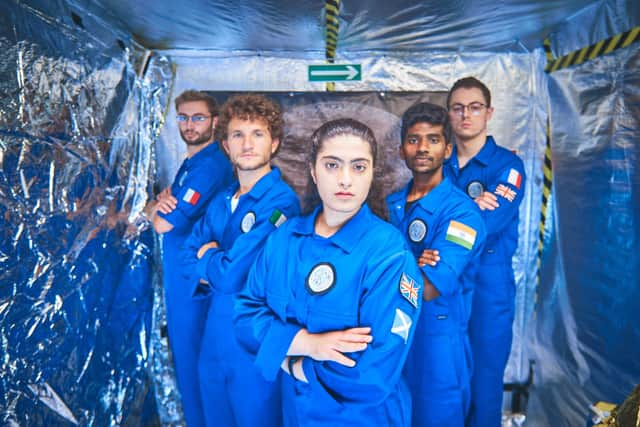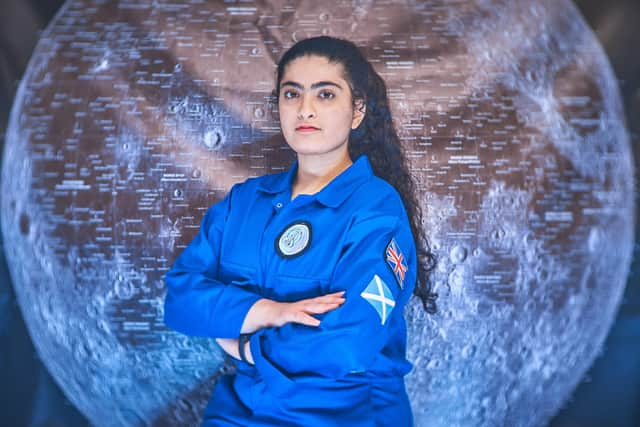Scottish female analog astronaut talks about her ‘trip to the Moon’
Nadia Mirza Saadi, 21, from the University of Glasgow, has been inspired to continue her journey as an analog astronaut after a recent ‘mission to the Moon’ with the initiative EuroMoonMars – which runs field campaigns in Moon-Mars simulations – at the Analog Astronaut Training Centre in Poland.
In a six-day experiment programme, Nadia and her male crew lived in 'The Habitat' and worked on various tasks to help them thrive in the environment as part of a project looking at Moon colonising.
Advertisement
Hide AdAdvertisement
Hide AdThroughout the week, the team – also comprising a medical doctor, an engineer and two engineering students – dealt with tasks such as how to respond to high carbon dioxide levels and limited water supplies.


Talking about her experience, Nadia said: “I was pleasantly surprised by how lovely the guys were, but there were still challenges to overcome.
“You always think that you need another girl there to be comfortable but with them I felt safe.”
The crew lived in a ‘cottage-sized space’ with bunk beds, a living area with kitchen, medical section, laboratory, gym, emergency room and a toilet.


Crew members did not know what time it was in Poland – as the simulation was set to a different time to follow a lunar scale – and were unable to see outside as The Habitat had no windows.
Despite this, Glaswegian Nadia and her crew from different parts of the world, including India, Italy and France, were able to ‘thrive’ through their experiences and even break challenges set by previous missions.
They broke the record exercise for running by covering around 170km over the six days in an environment with high CO2 levels.
After going through lockdown at her Hillhead home in Glasgow, Nadia said it was great to be part of a community once more: “Lockdown helped us as well because we used to the effects of being inside for so long anyway.
Advertisement
Hide AdAdvertisement
Hide Ad“We ate our meals together and when there was an emergency where we had to wait for communication to come back, we sang some songs and played some games.
“We laughed so much during the trip and we thought it was because we were turning delirious, but turns out that’s not a symptom of high CO2 levels, we just loved what we were doing.”
British-Pakistani and a former president of the South Asian society at her university, Nadia was pleased to see diverse representation and inclusion within the mission.
Nadia, who hopes to become a full-time analog astronaut after university, said to fly to space is a “dream beyond a dream”.
She added: “I’m really proud to have completed the mission.
"It’s part of the dream and with thanks to Bernard Foing, Agata Kołodziejczyk, Matt Harasymczuk and the crew we did it.
“To become an astronaut is a very esteemed thing to do – there a very few chances.
“I certainly have a lot more training to do but this is the first step and the first mission to becoming a better analog astronaut.”
A message from the Editor:
Thank you for reading this article. We're more reliant on your support than ever as the shift in consumer habits brought about by Coronavirus impacts our advertisers.
If you haven't already, please consider supporting our trusted, fact-checked journalism by taking out a digital subscription.
Comments
Want to join the conversation? Please or to comment on this article.
